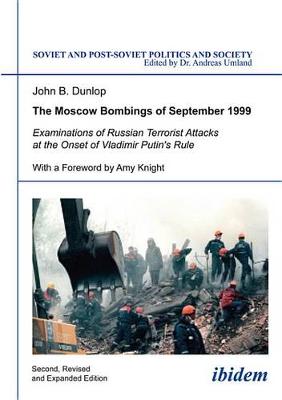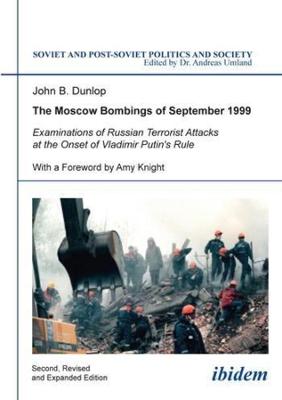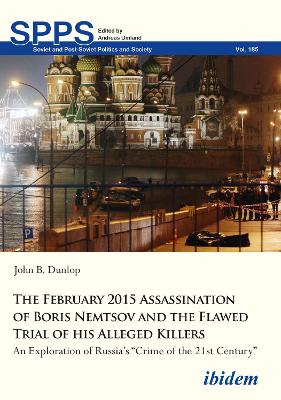Soviet and Post-Soviet Politics and Society
2 primary works • 4 total works
Book 26
Book 110
The five chapters of this volume focus on the complex and tumultuous events occurring in Russia during the five months from May through September 1999. They sparked the Russian invasion of Chechnya on 1 October and vaulted a previously unknown former KGB agent into the post of Russian prime minister and, ultimately, president. The five chapters are devoted to: * The intense political struggle taking place in Russia between May and August of 1999, culminating in an incursion by armed Islamic separatists into the Republic of Dagestan.* Two Moscow terrorist bombings of 9 and 13 September 1999, claiming the lives of 224 Muscovites and preparing the psychological and political ground for a full-blown invasion of Chechnya.* The so-called Ryazan Incident of 22 September 1999, when eyewitnesses observed officers of the FSB special forces placing a live bomb in the basement of an apartment building in the town of Rzayan.* The detonation of a powerful truck bomb outside of an apartment house in Buinaksk, Dagestan, on 4 September 1999, which took the lives of fifty-eight innocent victims.*
The explosion on 16 September 1999 of a truck bomb in the city of Volgdonsk in southern Russia, which killed eighteen persons and seriously wounded eighty-nine
The explosion on 16 September 1999 of a truck bomb in the city of Volgdonsk in southern Russia, which killed eighteen persons and seriously wounded eighty-nine
The February 2015 Assassination of Boris Nemtsov - An Exploration of Russia's "Crime of the 21st Century"
by John B. Dunlop
Published 29 January 2019
The book provides a detailed description of the Russian crime of the twenty-first century as well as a thorough examination of the eighty sessions of the nine-month-long trial (during 2016-2017) of Boris Nemtsovs alleged killers. It directs attention to the chief obstacle in determining what precisely happened shortly before midnight on February 27, 2015, on a bridge located a mere stones throw away from the Kremlin, in an area under the active surveillance of the Russian Federal Protective Service. The glaring absence of closed circuit videos from this most heavily guarded site in Russia is underscored. Given the absence of such key evidence, those seeking to investigate the murder have been akin to blind people stumbling about in obscurity. The attempts to penetrate this man-made fog undertaken during the course of the trial by the Nemtsov family attorneys, Vadim Prokhorov and Olga Mikhailova, as well as by numerous tenacious analysts of the crime, such as former deputy Russian energy minister Vladimir Milov, former Russian presidential economics advisor Andrei Illarionov, and leading mathematician Andrei Piontkovskii, are covered in full. The uneven case mounted by the prosecution and the scrappy defense effort of the attorneys for the alleged killers, many of them ethnic Chechens, are highlighted, as is the non-unanimous verdict which was reached by the twelve jurors. The findings of this study are in agreement with those of a number of commentators who contend that the actual organizers of the crime remain at large as does the assassinations shadowy mastermind.



